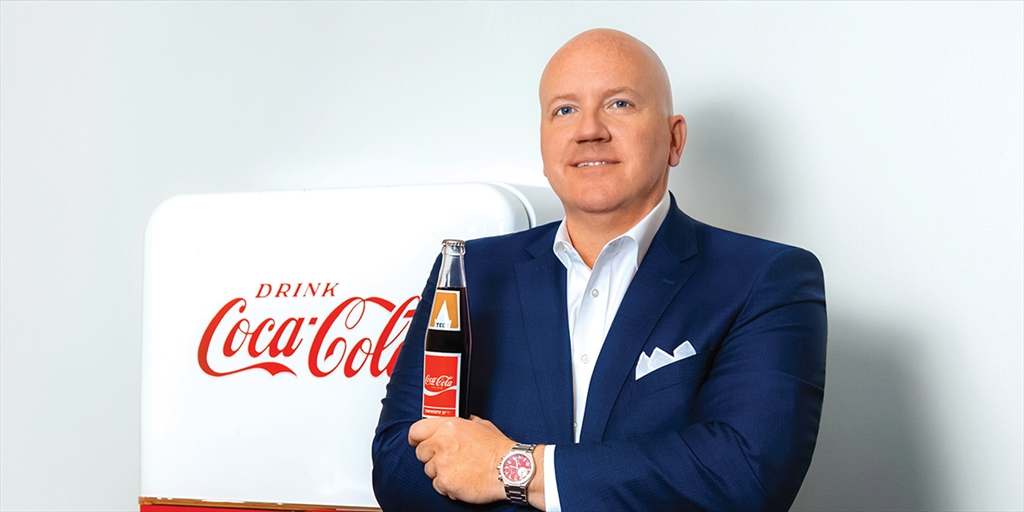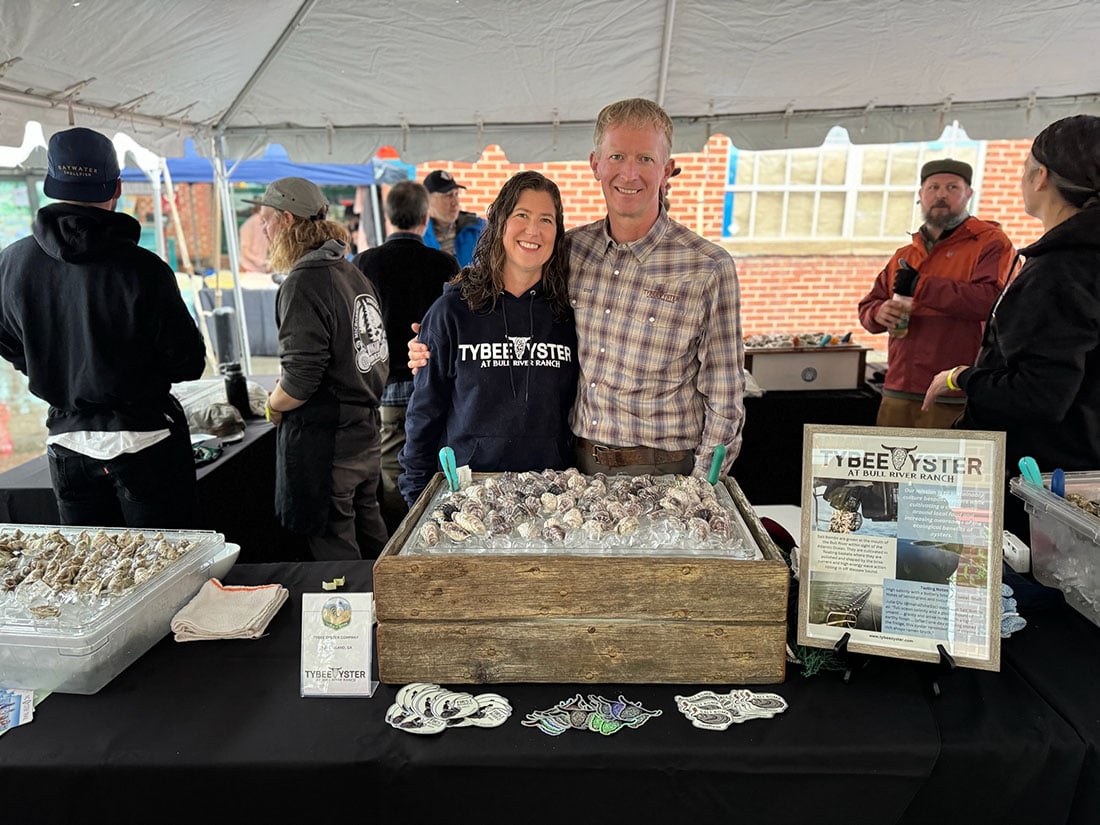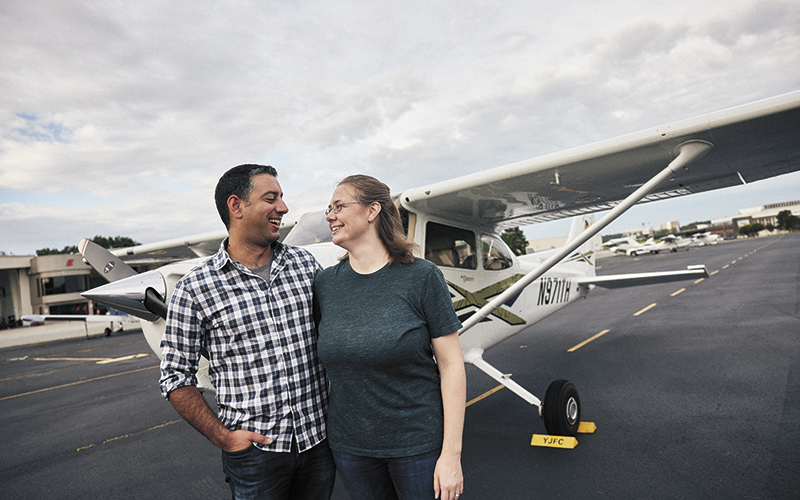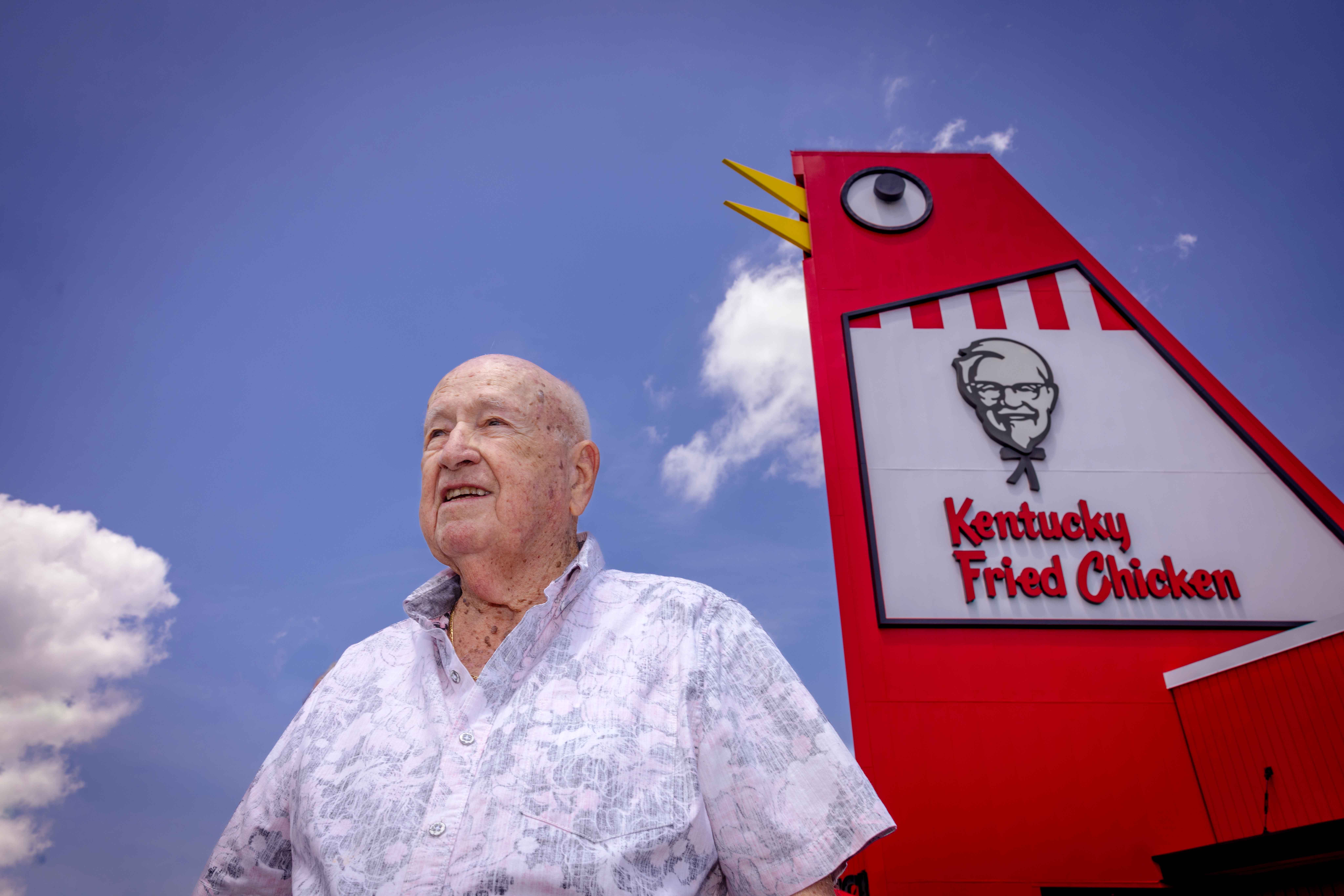A Major Change in the Flight Plan
By: Tony Rehagen | Categories: Alumni Celebrations

In 1995, Rich Staten decided to change his flight plan in midair. After seven years of designing fighter jets for General Dynamics and Lockheed Martin, Staten had already made a lifetime’s worth of contributions to developing advanced aircraft like the F-22 Raptor and the NASA High Speed Civil Transport. Then he pulled the eject lever on a career in the aerospace industry to hopefully land softly in the field of consumer products marketing. He was just 29.
Staten discovered that a Tech degree in aerospace engineering was more than a suitable parachute. And since landing at The Coca-Cola Company, he has rapidly risen through the corporate ranks and collected 82 global patents for Coca-Cola as an inventor of beverage products, packaging, merchandising and equipment technology that have made a sizable impact on the global beverage industry and his company’s bottom line.
The Alumni Magazine spoke with Staten, who now works as a director of strategic planning for Coca-Cola, to discuss the challenges of a career shift, how his time at Tech prepared him for the change in trajectory, and to ask his advice for anyone pondering a professional leap into the great unknown.
Q: Were you practically born to be an aerospace engineer?
I was born on Hunter Air Force Base in Savannah, Ga. My father was a career U.S. Air Force officer and he started out on a path to be an engineer. So I guess you could say I was destined to be an aerospace engineer. And when I was in high school in Ohio, I participated in an engineer-for-a-day program with Wright Aeronautical Labs, and I was captivated by the full-scale fatigue tests of the F-16 Fighting Falcon. I was like, “Wow! This is what aerospace engineers do!”
Q: What brought you to Tech?
I had a cousin with engineering degrees from Georgia Tech, Duke and Virginia Tech who recommended the Institute. Several other engineers who worked with my father also suggested Tech—those were very strong endorsements.
Q: How did Tech prepare you to follow through on that birthright?
Well, my original goal was to be a career Air Force officer, but fate intervened when I hurt my knee in an ROTC basketball game. After that, my Air Force career path was not viable anymore, so I was bound for the private sector.
When I “got out” of Tech, I was still able to pick the job I wanted. Because of Tech’s reputation, I had a wide range of aerospace career choices, from space systems to fighter jets to airliners—you name it.
Q: You chose fighter jets. What were your biggest accomplishments in that field?
When I was at General Dynamics, I was part of the development of the A12 Avenger II, the Navy’s stealth attack aircraft. It was a flying wing—an aerodynamicist’s dream. My biggest accomplishments at GD were the wind-tunnel testing of the A12 and developing software for stealthy wing designs. At Lockheed Martin, I led the aerodynamic design of the F--22 Raptor’s nose, wing and tail sections and did aerodynamic research on the NASA High Speed Civil Transport, a supersonic airliner which is starting to come back in the news.
Q: Why did you leave a career where you had accomplished so much?
Getting my MBA was part of advancing my career into engineering management at Lockheed Martin. I then started taking courses in fields I’d never been a part of, like economics and marketing, and they really captivated me. It made me think about other industries. I’d been around aircraft my entire life, but I was intrigued about finding other places to put my energies. I wound up with an additional master’s in marketing and a PhD in strategic management of innovation.
Q: How did your experience at Tech help ease the transition?
Experience with team projects is very valuable. And working alongside very high-caliber students—all of whom have very important roles on senior design projects—translates well to places like Lockheed Martin or Coca-Cola, which hire high-quality people. The analytical skills that I learned at Tech also applied. As did the time-management skills I developed through all the demanding classes that I took. At Coke, I immersed myself in the consumer products industry by looking for new opportunities. And I started to apply that Tech mindset of problem solving: Instead of looking at a challenge as a barrier, consider it a problem that needs solving or as an opportunity that needs to be advanced. I began to see opportunities for innovation and applications for research. Whether it’s research from a wind tunnel or from consumer surveys, it’s still data that you can interpret for insights.
Q: Which of your innovations at Coca-Cola in particular stand out to you?
I’ve been fortunate to have many patents that have been granted globally, from machine technology to beverage products to merchandising to packaging. Most are in other continental markets, such as Europe, Asia, Africa, Australia and South America. Of course, some are in North America. One that’s pretty common here in the U.S.—the one my daughters get a kick out of seeing in virtually every movie theater—is the three-barrel frozen beverage dispensing machine. The industry had been using two-barrel machines for years and the challenge was to get more product in the same-sized machine footprint—a 50-percent increase in availability. My early experience in aerospace electronic controls played a key role; the technologies had evolved enough since then to make this new solution financially viable.
Q: What are some other roles you've held at Coca-Cola?
I began in engineering, and was part of several account teams before working myself up through roles in planning management, innovation strategy and marketing strategy. I’ve been lucky to work across the company and on exciting events like the Olympics and NCAA Final Four. I’ve even worked on beverage systems for top sports stadiums, including Tech’s own Bobby Dodd. No matter the role, being able to innovate to meet customer needs is very exciting.
Q: Any advice for others thinking about switching careers?
First, take stock of your current skills. Then research the opportunities where your existing skills will apply. If you see gaps in those skills, be prepared to invest in yourself with additional training or even a degree. Tech started me on the path to achieve all of that. The time management, the analytical skills, the working with teams and the problem solving: You’re never dissuaded from continuing to work on challenges and opportunities. Those are skills that apply to every career.


